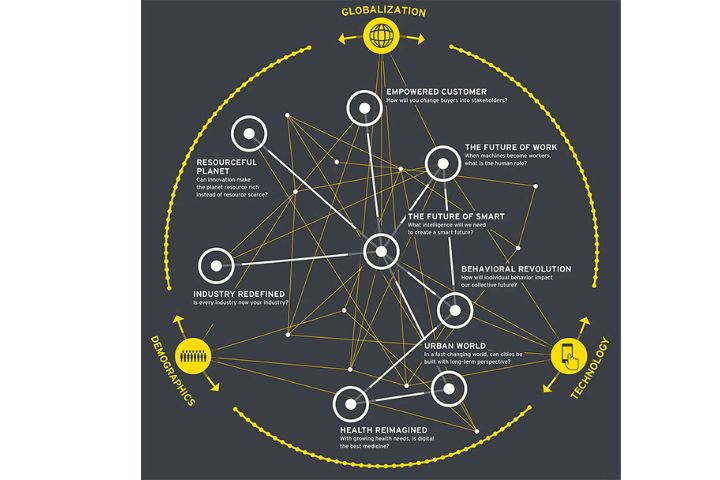The Positive Side Of Disruption: Keys And Advantages

Table of Contents
Keys To Disruption
In the last two decades, the definition of disruption has expanded far beyond its literal meaning and its effects transcend the business world as well.
The term disruption, first coined in 1995 by Harvard Business School professor Clayton Christensen, refers to the transformation of business models and the value of connection through technology and business innovation.
On the one hand, it is becoming increasingly clear that disruption is not exclusively linked to technology or innovation; since it is also influenced by demographic changes, globalization and macroeconomics, among others.
On the other side, some of the most disruptive technologies not only contribute to innovating corporate business models, but also society as a whole.
The degree of awareness of disruption, as well as the acceptance of this context of sudden changes that dominates the international scene, has increased in the business community. In fact, the presence in the media around the world of the term “disruptive innovation” has grown by more than 440% between 2010 and 2015, according to the report.
Keys To Disruption
EY analysis indicates that there are three root causes or ‘primary forces’ behind disruption: technology, globalization and demographics.
- Technology . Disruption is generally associated with a relatively recent context related to Information and Communication Technologies (ICT), but technical advances have driven great changes in societies for centuries: from the Industrial Revolution to the Technological Revolution, going through those related to the use of virtual reality, the Internet of Things (IoT) or Artificial Intelligence, which also promise to generate a revolution on the global stage.
- Globalization . Globalization has accelerated in recent decades thanks to trade liberalization and the growth of emerging markets. These factors disrupt and influence existing business models as they create new competitors, reorder supply chains and drive down price levels.
- Demographics . Throughout history, demographic changes have been key in the future of humanity. In the coming decades, it is expected that a higher birth rate in parts of Africa and in countries such as India will favor a greater presence of these regions as economic engines. In turn, factors such as the aging of the population, the greater presence of millennials in the workplace, or the urbanization processes of cities will require new strategies and business models.
The interaction of the three mentioned forces results in eight megatrends

How To Take Advantage Of Disruption?
According to The Upside of Disruption report , companies looking to innovate their business models should start by focusing on these five questions:
- What is your business? Disruption can change the traditional business of the company itself. Therefore, understanding how your core business has changed is the first step in reinventing your business model.
- Who is your customer? Disruption creates new customer segments, with different needs and expectations. Understanding this change, detecting new consumers and what their needs are, is of vital importance.
- What is your value proposition? To meet the expectations of the new customer base, a personalized value proposition is needed, and in many cases, different from the traditional one.
- What are your competitors? The wave of changes attracts new non-traditional entrants to compete in different sectors. This convergence of industries, and trends such as the collaborative economy, make it essential to know how these competitors are impacting the business.
- What is the risk of being inactive? we tend to underestimate the speed of revolutions and changes. The economic potential of a disruptive opportunity may seem insignificant compared to the size of your business today, but in an increasingly disruptive environment, the biggest risk is standing still.






